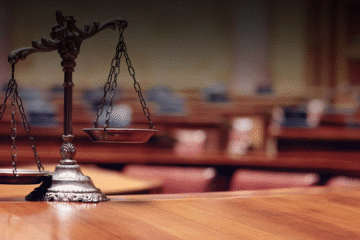
This article is written by Gungun Sharma of 3rd Semester of Hidayatullah National Law University, Raipur
ABSTRACT
Children are the future of our nation and to protect and preserve their mental and physical health is really important. The fact is that some children’s life become abnormal due to reasons like orphancy, poverty, etc. or there can be other reason as well, which sometimes make them commit acts that are in conflict with the law. To preserve this childhood and to protect children from further deterioration and from the trap of a harsher criminal mentality, “The Juvenile Justice Act” was enacted. It ventured to protect the rights and rehabilitate “children in conflict with law”, and mandates the establishment of special homes. These specialized facilities serve as secure residential centers for juveniles in need of care and protection, offering an alternative to imprisonment in regular correctional institutions. This article explores the concept and significance of “Special Homes” under the Juvenile Justice Act. It highlights the primary objectives of Special Homes, which include providing care, protection, and rehabilitation to children who have committed offenses. By focusing on the unique needs and vulnerabilities of juvenile offenders, these institutions aim to foster their physical, emotional, and psychological well-being.
This article examines the key features of Special Homes, such as their secure and child-friendly environment, qualified staff, and access to essential services, including education, healthcare, and vocational training. It underscores the importance of a multidisciplinary approach that combines social work, counselling and skill development to address the underlying causes of juvenile delinquency and promote reintegration into society. Furthermore, it discusses the legal framework governing Special Homes, outlining the rights and entitlements of juveniles residing in these facilities. It emphasizes the significance of due process, privacy, and confidentiality, ensuring that the rights of juvenile offenders are upheld while ensuring their accountability for their actions.
It emphasizes the critical role played by Special Homes under the “Juvenile Justice Act” in protecting the rights and well-being of “children in conflict with the law”. By offering a rehabilitative and child-centric approach, these facilities aim to reintegrate juvenile offenders into society as responsible and law-abiding citizens. It advocates for continued research, policy development, and support to strengthen the capacity of Special Homes in their noble mission.
KEYWORDS
Special Home, Juvenile, “Children in conflict with the law”, Rehabilitation, Child centric approach, Ministry of Women and child development, Child counseling.
INTRODUCTION
The “Juvenile Justice Act” is a crucial piece of legislation designed to preserve the well-being of “children in conflict with the law”. Under this Act, special provisions are made for the care and rehabilitation of juvenile offenders through the establishment of Special Homes. These homes serve as essential institutions for the reformation and reintegration of children who have committed offenses. Special Homes are dedicated facilities that provide a secure and nurturing environment for juveniles, ensuring their physical, emotional, and psychological development. The primary objective of these homes is to promote the welfare and rehabilitation of juvenile offenders by focusing on their individual needs, potential and social reintegration. In a Special Home, the emphasis is placed on creating a holistic support system that addresses the unique circumstances and challenges faced by juvenile offenders. Trained and experienced staff members, including social workers, counselors, and educators, work together to provide personalized care and attention to each child. They strive to create a safe growth learning, and personal transformation. Special Homes not only provide basic amenities such as shelter, food, and healthcare but also offer a range of educational and skill-building opportunities. Juvenile offenders are given access to formal education, vocational training, and recreational activities that aim to develop their talents, enhance their employability, and foster their overall well-being. Furthermore, Special Homes play an important role in facilitating the legal proceedings and social reintegration of juvenile offenders. They provide necessary support and guidance to juveniles during court hearings and ensure that their rights are protected throughout the legal process. Moreover, these homes collaborate with various stakeholders, including families, communities, and relevant government agencies, to devise comprehensive plans for the successful reintegration of juveniles back into society.
RESEARCH OBJECTIVES
This article has been set to achieve to find out about special homes which are established under the juvenile justice act. It aims to find the working of the special homes, the facilities that are provided therein, how the children are treated there and how the people in the SH helps the children in their improvement so as to make them to rehabilitate and reintegrate into the society. This article has also ventured to find out how the facilities provided to “the children in conflict with the law” helps in their proper development as a normal child.
RESEARCH METHODOLOGY
This research article has been written by mostly focusing on the doctrinal research so as to explain about the legal principles that provides information about the special homes. The statutes related to juvenile justice has been read in depth for that. For this article, the manual published by the Ministry of Women and Child Development about the “Living Conditions in Institutions for Children in Conflict with Law” has also been read for finding the practical working of the special homes and how it is helpful for the overall development of the “children in conflict with the law”. Also, some published research articles have been read to come to a better interpretation of the situation.
HISTORY OF “JUVENILE JUSTICE SYSTEM IN INDIA REGARDING SPECIAL HOMES”
The history of “the juvenile justice system in India” with regards to special homes is intertwined with the broader developments of laws and institutions for the care and rehabilitation of juvenile offenders. Special homes are one type of residential facility established under the “juvenile justice system” to cater specifically to the needs of “juveniles in conflict with the law”. The establishment of “special homes” can be traced back to the “Children Act of 1960”, which replaced the “Apprentices Act” and introduced a new approach to the treatment of juvenile offenders. The act recognized the need for separate facilities to house and rehabilitate “children in conflict with the law”. It mandated the establishment of ‘Juvenile Homes’ or reception centers to provide “care, protection, and rehabilitation to juvenile offenders”. Over the years, the concept of special homes evolved to ensure the proper physical, emotional, and social development of juvenile offenders. The “JUVENILE JUSTICE (CARE AND PROTECTION OF CHILDREN) ACT of 2000” provided further impetus to the establishment of special homes as institutions that cater exclusively to children in conflict with the law and prescribed guidelines for their functioning. Furthermore,” the Juvenile Justice (Care and Protection of Children) Act of 2015”, which amended the 2000 act, reinforced the role of special homes in the juvenile justice system. It emphasized the need to ensure the protection, development, and rehabilitation of juveniles in conflict with the law within a child-friendly environment. The act also introduced provisions for the periodic review and inspection of special homes to ensure compliance with the prescribed standards and guidelines.
LEGAL DEVELOPMENT SO FAR
The particular section which deals with establishing Special Homes under the Juvenile Justice Act is “section 47(1)”. It outlines the legal system provisions and requirements for these residential facilities catering to “juveniles in conflict with the law”. The “juvenile justice act of 1986” did not specifically address the establishment of “special homes”. It focused on the rehabilitation and welfare of juvenile offenders but did not provide detailed guidelines for their residential care. After this, “the Juvenile Justice (Care and Protection of Children) Act of 2000” came which led to major amendments and introduced the concept of special homes. It mandated the establishment of special homes as secure residential facilities exclusively for “juveniles in conflict with the law”. The act outlined the basic requirements and standards for these homes, including provisions for “shelter, education, vocational training, and rehabilitation services”. “The Juvenile Justice (Care and Protection of Children) Act of 2015”, then further attempted to redefined the provisions related to special homes. It strengthened the legal framework for the care and protection of “children in conflict with the law” and emphasized their rights and well-being. The legal development of “Section 47(1)” reflects the evolving recognition of the specific needs of “juveniles in conflict with the law” and the importance of specialized residential care for their rehabilitation. It sets the foundation for the establishment and functioning of “special homes”, outlining their objectives, functions, and the necessary guidelines to ensure the well-being and reintegration of “juvenile offenders”.
OBJECTIVES OF ESTABLISHING SPECIAL HOMES
There are various objectives of establishing the “special homes for children in conflict with law” that includes provide services such as counselling, education, psychiatric support, make “Individual Care Plan” for every child with regards to their individual understanding and background, their different needs and interests. They also try to make sure that the children are accepting the accountability for their crime and are able to understand the consequence of the same so that they would not repeat it in the future. Besides all this, they prepare the child for reintegrating into the society with a non-criminal mentality. The officials in the special homes basically helps the child in their overall development by providing them services that the children need for improving their physical as well as mental health. [1]
ANALYSIS OF THE PRACTICAL IMPLIMENTATION OF “SECTION 47(1) OF JUVENILE JUSTICE (CARE AND PROTECTION OF CHILDREN) ACT, 2015”
The special homes as defined under “section 2(56)” of this act means” an institution established by a state government or by a voluntary or non-governmental organisation, registered under section 48, for housing and providing rehabilitative services to children in conflict with the law, who are found, through inquiry, to have committed an offence and are sent to such institution by an order of the Board”. [2]The implementation of this section in practical differs from different states and regions. Different regions have different development level, therefore number of children in conflict with the law and the nature of crime or deviance done by them differs, and so as the implementation. The government (central and state), provides the guidelines that has to be followed by the officers directly or indirectly involved in the management of childcare institutions for juvenile specially the Special Homes.
Working of the special homes
It has been described by the government that special homes are those places which are established for the “rehabilitation of those children in conflict with law who are found to have committed an offence and who are placed there by an order of the Juvenile Justice Board made under section 18 of this act”. Also, they have provided 3 years as the maximum duration in which the child can be kept in the home. The authority which has given the power to establish it is State Government. They may establish it in different districts as per the need. They can do it either by themselves directly or they also have the option to establish it through voluntary or non-governmental organisations. A child gets admitted to the special home after the final judgement has come by the “Board/ children’s court” with the help of the “IO/police personnel/ or a staff” once he/she have completed the prescribed duration in the observation home. The child then gets placed in a “Reception Dormitory” for the first 14 days. The receiving of the child is performed by the Receiving Officer who follows all the procedures and guidelines such as undertaking the proper introductions of himself and the place so that the child can properly get acquainted with the place, other children and people who work there. A child is not prepared mentally with all the legal procedures that happens; therefore, he has to be well treated and introduced by the people in the special home. They have to make the child gets ensured about his/her safety and that they are always there for the child in any kind of help. The Receiving officer also undertake all the necessary documentation. He has to provide the child with every reasonable necessity that the child requires.
The Superintendent assisted by the PO, then shall provide an orientation to the child about the environment in the CCL. They should also listen to the questions of the children by also giving reasonable answers. The orientation should involve proper introductory counselling of the children explaining him about everything giving them the brief about the facilities they would be getting in the place and trying to understand the mentality of the children.
The people working their then prepares the Individual Care Plan for every child. They take the details of each child respectively. This is done because “every child is unique and has a unique set of needs, therefore these inputs would be required for understanding the education, vocational training, and mental and physical needs of the child”. They start making it while the child is in the reception unit. The PO/CWO/Case Worker are responsible for this work. After the child has been moved out of the Reception Unit, he/she gets introduced to the children and key staff in the special home and also, they should be taken around the SH and made familiar to the different parts of the special home. [3]
Facilities provided in the special homes
The various facilities that are provided to the children in the special homes for their improvement and better rehabilitation & reintegration are as follows:
Vocational training workshops- These are provided so as to introduce the young minds to modern crafts such as those in the” hospitality industry, hair cutting and beautician, computer hardware networking, mobile repair, air conditioning repair and maintenance, electrician work, plumbing work, retail management, computer literacy among others”. [4]Workshops for basic education and other skills that will help youngsters operate well in their workplace may also run concurrently with vocational training programmes. These include things like public speaking, proper grooming, fundamental math and language skills, how to fill out paperwork and apply for jobs, as well as things like work ethic and discipline.
Basic life skills- They are the activities where the children are put to learn various skills such as psycho-social and cognitive skills that enable kids to communicate clearly, make wise decisions, and control their emotions. Workshops for basic education and other skills that will help youngsters operate well in their professions and eventually at the workplace may run concurrently with workshops for vocational training. These include things like public speaking, proper grooming, fundamental math and language skills, how to fill out paperwork and apply for jobs, as well as things like work ethic and discipline. [5]
Physical training
Every child needs to participate in sports and other forms of recreation because they help them to create good relationships, learn how to compete, understand themselves and their peers better, and learn the importance of being disciplined, working hard and getting results. Therefore, the children in the special homes are put into various physical activities like light warmups, light or intense exercises and various sports in their daily routine. It gives them a particular time apart from the stresses of daily life and inspires them to strive for more.
Other than these too, other facilities such as recreation, art and crafts, summer and winter camps for sports and recreation, safety and security measures, emergency services, etc. [6]
CONCLUSION
The special homes established under the Juvenile Justice Act plays a crucial role in rehabilitating and reintegrating “juveniles in conflict with the law”. These homes provide a safe and supportive environment for young offenders, ensuring their well-being, education, skill development, and overall development. The Juvenile Justice Act aims to strike a balance between holding juveniles accountable for their actions and offering them an opportunity for reform and reintegration into society. These homes provide a supportive environment where young individuals can receive appropriate care, education, and guidance to address the underlying causes of their delinquent behaviour. Special homes play a crucial role in ensuring that juvenile offenders are not subjected to the harsh conditions of adult prisons, which could further contribute to their criminalization. Instead, these facilities prioritize the welfare and development of juveniles by offering various services such as counselling, vocational training, and recreational activities. By focusing on the rehabilitation rather than the punishment of young offenders, special homes aim to facilitate their successful reintegration into society. The objective is to equip them with the necessary skills, education, and support networks to lead productive lives and break the cycle of criminal behaviour.
REFRENCES
- The Juvenile Justice Act, 1986.
- The Juvenile Justice (Care and Protection of Children) Act, 2000.
- The Juvenile Justice (Care and Protection of Children) Act, 2015.
- Ministry of Women and Child Development, Government of India, Living Conditions in Institutions for Children in Conflict with Law, available at http://www.wcd.nic.in, last seen on 16/06/23.
- Ved Kumari, Current issues in Juvenile Justice in India, Journal of the Indian Law Institute, (1999), available at https://www.jstor.org/stable/43953338, last seen on 14/06/23.
- Sanford J. Fox, Juvenile Justice Reform: An Historical Perspective, Sanford Law Review, (1970), available at https://www.jstor.org/stable/1227960, last seen on 14/06/23.
[1] “Ministry of Women and Child Development, Government of India, Living Conditions in Institutions for Children in Conflict with Law, available at http://www.wcd.nic.in, last seen on 16/06/23”.
[2] “S.2(56), The Juvenile Justice (Care and Protection of Children) Act, 2015. “
[3] “Ministry of Women and Child Development, Government of India, Living Conditions in Institutions for Children in Conflict with Law, available at http://www.wcd.nic.in, last seen on 16/06/23”.
[4] Ibid.
[5] Ibid.
[6] “Ministry of Women and Child Development, Government of India, Living Conditions in Institutions for Children in Conflict with Law, available at http://www.wcd.nic.in, last seen on 16/06/23.”




0 Comments